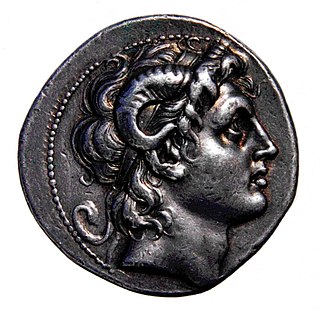Amun (Amun-Ra, Amon, Ammon, Amen, Amoun, or Hammon) is an Egyptian god.
Contents
Amun may also refer to:
Amun (Amun-Ra, Amon, Ammon, Amen, Amoun, or Hammon) is an Egyptian god.
Amun may also refer to:
Amon may refer to:
Ammon was an ancient Canaanite nation.
Naga or NAGA may refer to:

Aamon, in demonology, is a Grand Marquis of Hell who governs 40 infernal legions, and the 7th spirit of the Goetia. He is the demon of life and reproduction.
Amen is a declaration of affirmation found in the Hebrew Bible and New Testament.
Soma may refer to:
Zosimus, Zosimos, Zosima or Zosimas may refer to:

Ammon, Amun, Ammonas, Amoun (Ἀμοῦν), or Ammonius the Hermit was a 4th-century Christian ascetic and the founder of one of the most celebrated monastic communities in Egypt. He was subsequently declared a saint. He was one of the most venerated ascetics of the Nitrian Desert, and Athanasius of Alexandria mentions him in his life of Anthony the Great.
A dervish is a Sufi Muslim ascetic.
Ammonites are an extinct group of marine animals, including:

Maryam or Mariam is the Aramaic form of the biblical name Miriam. It is notably the name of Mary the mother of Jesus. The spelling in the Semitic abjads is mrym, which may be vowelized in a number of ways
Yusuf is a male name meaning "God increases". It is the Arabic equivalent of the Hebrew name Yosef and the English name Joseph. It is widely used in many parts of the world by Arabs of all Abrahamic religions, including Middle Eastern Jews, Arab Christians, and Muslims.
Hammon can refer to:
The traditional Berber religion is the sum of ancient and native set of beliefs and deities adhered to by the Berbers. Many ancient Berber beliefs were developed locally including the cults for local gods such as Atlas, and the goddess Tanit and Ammon, whereas others were influenced over time through contact with others like ancient Egyptian religion such as Isis which was worshipped in eastern Libya, or borrowed during antiquity from the Punic religion such as Eshmun and Baal, Judaism, Iberian mythology, and the Hellenistic religion like the worship of Apollo and Ceres. Some of the ancient Berber beliefs still exist today subtly within the Berber popular culture and tradition. Syncretic influences from the traditional Berber religion can also be found in many other faiths around the Mediterranean.
Muhammad Omar, and other spellings such as Mohamed Omer, may refer to the following people:
Aman may refer to:
Amun was a major ancient Egyptian deity who appears as a member of the Hermopolitan Ogdoad. Amun was attested from the Old Kingdom together with his wife Amunet. His oracle in Siwa Oasis, located Western Egypt,near the Libyan Desert remained the only oracle of Amun throughout. With the 11th Dynasty, Amun rose to the position of patron deity of Thebes by replacing Montu.

Deities depicted with horns or antlers are found in many religions across the world. In religions that venerate animal deities, horned bulls, goats, and rams may be worshiped as deities or serve as the inspiration for a deity's appearance. Many pagan religions include horned gods in their pantheons, such as Pan in Greek mythology and Ikenga in Odinala. Some neopagan religions have constructed these deities as the Horned God, representing the male part of their duotheistic theological system.
Troia may refer to:

The horns of Ammon were curling ram horns, used as a symbol of the Egyptian deity Ammon. Because of the visual similarity, they were also associated with the fossils shells of ancient snails and cephalopods, the latter now known as ammonite because of that historical connection.